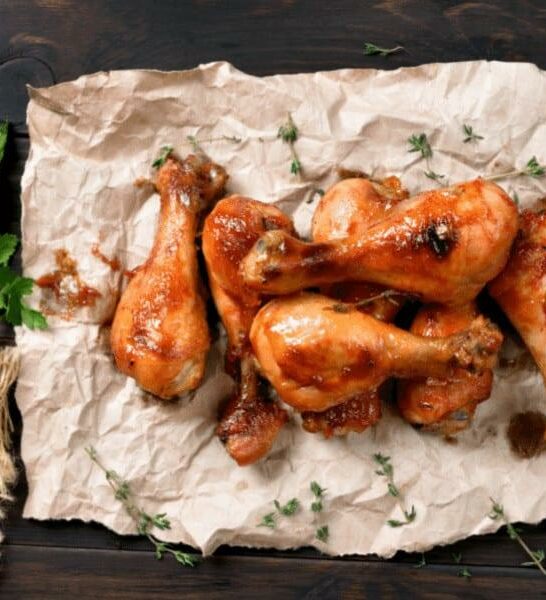How to Tell if Chicken Drumsticks Are Done? Instead of ordering takeout, you decide that today is the day you cook those chicken drumsticks you bought at the grocery last week.
You want something that’s quick and easy, not too hands-on. Something you season and flavor in a few minutes and leave to cook while you catch up on your favorite TV show.
You chop up some fresh garlic, mix it with some olive oil, season with salt and pepper and rub it all over your chicken drumsticks before baking it in a 350 °F oven. The question is, how do you know if dinner is ready, and the chicken drumsticks are done?
How to Tell if Chicken Drumsticks Are Done?
Chicken drumsticks are done and safe to consume if, when pierced with a knife, the juices of the meat run clear, and a meat thermometer inserted in the thickest part of the chicken registers a temperature of at least 165°F.
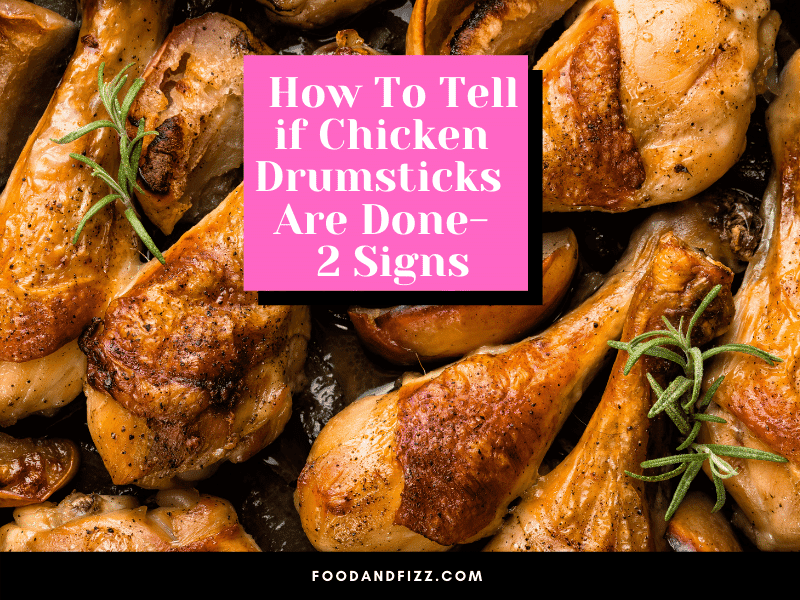
What Part of the Chicken Are the Drumsticks?
There are two parts to a chicken leg. The upper part is the thighs and the lower part attached to the foot are the drumsticks. Considered dark meat, they are preferred by a lot of people as they hold more flavor and moisture compared to their white meat counterparts, like the breast.
Dark meat is juicier and more flavorful, but it also has a higher fat content than white meat, making it a less popular choice among those who are watching their caloric intake.
Nevertheless, chicken drumsticks are still a preferred choice by many because it is very convenient to purchase at any grocery store and it is a very versatile protein, offering a plethora of cooking possibilities.
Ways to Cook Chicken Drumsticks
Chicken drumsticks are very versatile and can hold up to cooking using a variety of different methods. They can be baked, fried, or grilled and are the perfect chicken part to use in stews and soups. It is a well-known fact in cooking that the closer the meat is to the bone and the higher the fat content, the more flavor it has.

Chicken drumsticks have a higher fat content than white meat and having the bone intact in the drumsticks assures that it will impart a rich, deep flavor to any dish you are making. It is also a sturdy chicken part and can withstand hours of slow cooking if you ever want to extract the maximum flavor out of your chicken.
How to Tell If Chicken Is Cooked
Whether you are baking, frying, grilling, or cooking them on a stovetop, there are two simple ways to know if your chicken drumsticks are done. Fortunately, all it takes is a good eye and one affordable kitchen tool.
1. Chicken is finished cooking if the meat juices are clear
An easy way to check if the chicken is done is to pierce the meat with a knife and to observe the color of the meat juices that comes out of the chicken.
If the juices are clear and colorless, your chicken is done and you can safely consume it. If, however, there is some blood or if the juices are tinged with a pink or red hue, it means the chicken is not cooked yet.
Even if it looks like it’s cooked from the outside, this simple test will help you determine whether your chicken is really done cooking or not. If it still has blood or juices are not clear, continue cooking and repeat the test in a few minutes.
2. The meat thermometer should register at least 165°F when it is inserted in the meatiest part of the drumstick
The more precise way of determining whether the chicken drumsticks are done is to use a meat thermometer. The USDA says that the internal temperature of the chicken parts should reach at least 165°F to be considered safe to consume.
Most cooking circles recommend though that you wait until chicken drumsticks are at 170 °F – 175 °F. If your chicken has reached this temperature, it means it can safely be consumed.
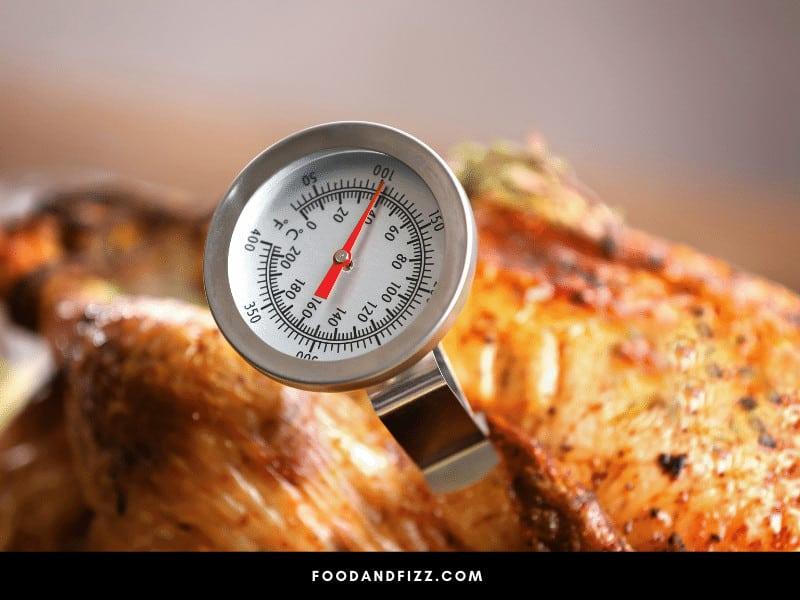
Meat thermometers are not expensive and can easily be bought at cooking stores. They are extremely helpful in the kitchen especially if you cook a lot of meat, as safe internal temperatures vary depending on the type of meat and the specific part you are using.
It is worth investing in one for your kitchen to more accurately ensure food safety, and achieve the best results for any dish you are cooking.
How to Ensure that Your Chicken Drumsticks Are Properly Cooked
To ensure that your chicken drumsticks will properly cook within the recommended period of time, always ensure that you start with room-temperature chicken.
The reasons are as follows:
They will hold marinades or seasonings better
Room temperature chicken will be easier to season and will absorb more of the flavors of the marinade or seasonings that you add.
They will cook more evenly
Putting frozen chicken drumsticks on a grill will almost guarantee that you will end up with chicken that’s burnt on the outside but raw and bloody on the inside. Starting with room temperature chicken allows the inside and the outside of your chicken to start at relatively the same temperature and thus, cook more evenly.
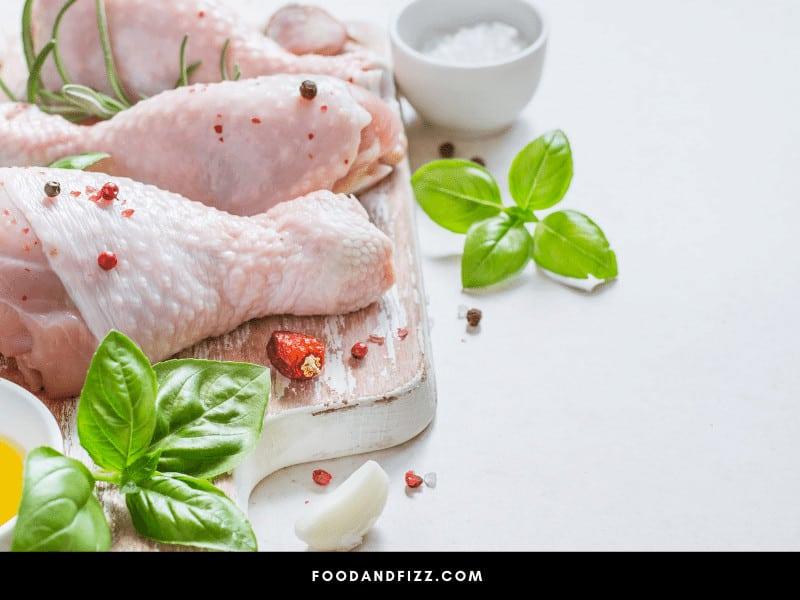
Risks for Undercooked Chicken
Raw chicken can be host to a lot of harmful bacteria that may cause us to get sick.
The most well-known of these bacteria that are associated with raw chicken is Salmonella.
Salmonella poisoning can cause diarrhea, fever, headaches, and chills, among other things.
While symptoms of food-borne illnesses usually resolve in a few days, there is always the risk of a more serious illness that may need immediate hospitalization.
Therefore, it is important to follow the recommended safe internal temperatures for the consumption of chicken, as well as other meats to ensure we are not unnecessarily risking our health.
Health Benefits of Chicken
Chicken is a healthy choice of protein with many nutritional benefits.
It is high in protein and has a lower fat content compared to other animal proteins, such as beef. Protein is important in building and repairing the body and plays a vital part in maintaining our muscles.
Chicken is also rich in B-vitamins that help our body metabolize energy and maintains healthy skin, hair, eyes, and nerves. It also has selenium which helps with immunity and thyroid function.
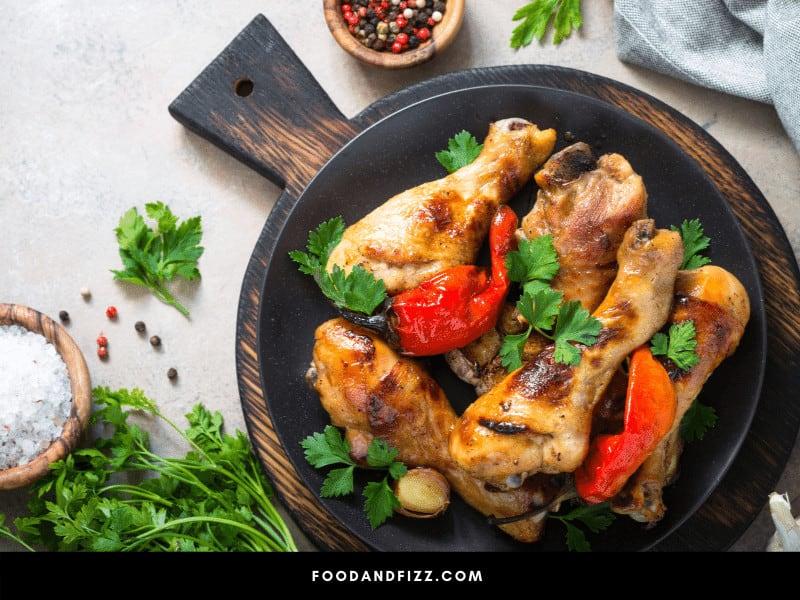
Conclusion About How to Tell if Chicken Drumsticks are Done
Chicken truly is a great addition to a healthy diet. As long as we always follow safe handling procedures, follow the guidelines on how to cook them properly and safely and properly check for doneness, we can be assured that we are consuming food that imparts a lot of nutritional benefits to our bodies.
Frequently Asked Questions to How to Tell if Chicken Drumsticks are Done
If the skin is brown or golden, does it mean that the chicken is cooked?
Even if it looks like it is cooked on the outside, it doesn’t necessarily mean that it is fully cooked on the inside. You should always check for doneness by placing a meat thermometer in the thickest part of the chicken drumsticks and check that it registers a temperature of 165°F – 175 °F. You can also cut into the chicken and check what the meat juices look like. If there’s no pink or red hue in the meat juices, your chicken is likely done.
My chicken drumsticks have pink meat, is this safe to eat?
Sometimes, the meat thermometer may register at least 165 °F but we see that the chicken meat is still pink (not the juices, but the meat itself). It is understandable to be concerned but as per the USDA, it is safe for consumption as long as all parts of the chicken register a minimum temperature of 165°F. The color of the meat does not accurately determine if it is already done as several factors may affect this, such as chemical reactions due to cooking and the storing conditions and the nature of the meat itself.

